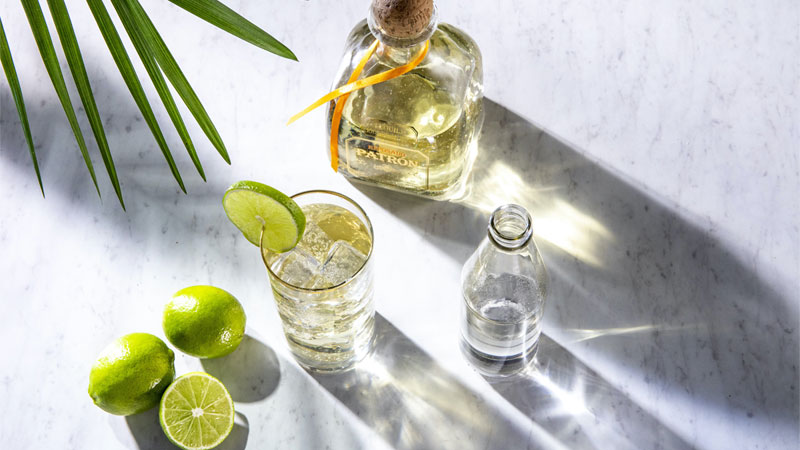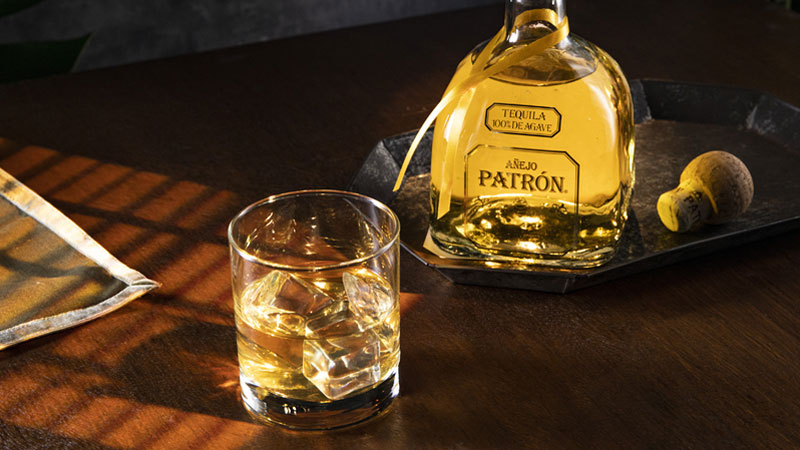There’s a reason why farm-to-table restaurants have grown incredibly popular over the last several years. People want to know what ingredients go into the delicious meal they’re about to enjoy, and where they came from. Likewise, within the world of tequila, industry leaders and agave lovers alike are looking for full disclosure on the components found in spirits.
There’s a generation of consumers that actually do not know what the traditional tequila tastes like. “What’s interesting is what they’ve grown up with this whole time. It’s been almost like this modified version of tradition.” Many of the tequila brands that are showcased and served to the public have been modified and marred by additives.
Director of trade education and mixology at PATRÓN, David Alan, says, “Additives are designed to smooth out the rough edges of a tequila, to add a flavor that isn’t present in the tequila as it was distilled.” For example, many brands will add artificial, flavored syrups in a hasty attempt to replicate the complexities that are traditionally only achieved through a long, arduous production. Alan adds, “On close inspection, the ruse doesn’t work, and the additive tastes like an artificial approximation of the real thing.”
In fact today, even if a tequila claims to be made with 100 percent agave on its label, this won’t guarantee that 100 percent of the spirit’s sugars are derived from an agave plant. In actuality, producers are now legally allowed to add up to 1 percent of any flavoring or additive without publicly disclosing the chemical used. Of course, these decisions may have passed fairly unnoticed 25 years ago, but given how rapidly food science has evolved, that 1 percent can make a huge difference in modern tequila.
Chantal Martineau, spirits and wine columnist, author of “How the Gringos Stole Tequila,” and co-author of “Finding Mezcal,” adds: “There aren’t a lot of rules that stop you from doing stuff to tequila. You can’t make it in a way where it can make people sick, obviously, but outside of that, there’s a lot of ways it’s doctored legally.” This is especially true with mixto tequilas, as a mixto can include up to 49 percent non-agave ingredients and must only be crafted with 51 percent agave spirits.
Within the last couple years, there have been agave shortages due to a rising interest in tequila crafted solely with agave. While people like tequila and it’s very popular, people are drinking better tequila, so they want the 100 percent agave, which is like a double-edged sword. It’s good because it’s more traditional, and tends to be a better tequila than a mixto. So, because brands need more agave to make 100 percent agave tequila, they need more of it. However, as mentioned, even reaching for popular “100 percent agave” tequilas cannot guarantee success.
Instead, even these tequilas may still include harmful additives, especially when producers become impatient. With limited space to plant agave and the seven years it takes each plant to fully mature, some tequila makers are cutting corners.


Quinonez mentions there’s the “good, bad, and the ugly” regarding the shortcuts many tequila makers take. She states, “The ugly is harvesting agave plants before their due date. So, you’re basically extracting soil minerals into a plant that is premature.” Therefore, a key reason why additives are added is that some makers have harvested the agave too young. So, when you’re starting off with raw material that isn’t quite ready, you end up with subpar results and a faulty spirit. All tequilas start off as blanco. You can’t disguise a mistake and not see it shine through in a blanco. Quinonez adds: “How do you mask that [mistake]? You mask it with your additives.”
Though it can be tricky, Martineau mentions that usually additive-free tequilas don’t require salt and lime to be enjoyed. She adds: “That whole thing with the lime and the salt is not traditional. It’s an American invention and it’s something that came probably just out of having to create a ritual over drinking something that doesn’t taste good.” In contrast, a quality 100 percent agave tequila will taste like baked or steamed agave and have other complexities like a little minerality, along with depth in flavors.
Furthermore, while some tequilas containing additives are subtle enough to sneak by, others are almost cartoonishly obvious. Tequilas with additives are usually single-note and extremely sweet. If a tequila smells like an aroma that seems artificial or out of place or like something not typically found in tequila — big vanilla cupcake aroma or artificial candy flavors that jump out and seem suspicious, these are quite likely the result of additives.


Tequila drinkers can also enlist assistance online and through apps designed to classify additive-free tequilas versus those that are not. Grover and Scarlet Sanschagrin, the founders of one such site, developed an initiative to highlight additive-free tequila in 2013. In the tequila world, additives are permitted under the norms and they don’t have to be put on the label. So, we wanted to bring some transparency to that. We wanted consumers to easily see the difference, so they can make buying choices on their own. Traditional tequila is a laborious process all the way from harvesting the agave to cooking it to letting it ferment and letting it develop. That all forms complex aromas and flavors. Tequila is truly a complex spirit when done in a traditional way. There’s no way of shortcutting that. So, if you’re producing a lot of volumes and you have a lot of demand, it would be [tempting] to speed that [process] up, but you will lose that complexity.”
There are many tequila makers in the industry that have succumbed to using such technology to rush the process. Grover says: “What is common now is for tequila to be made in a very industrialized fashion using very efficient machinery that produces a product that is kind of bland. As a result, they need additives to bring back some type of tequila flavoring to it. So, they’ll make a product in the fastest way possible. They really rush the process through.”
However, there’s hope in that there are a few tequila distilleries remaining true to the traditional craft of artisanal tequila, such as PATRÓN. “Our team has resisted many aspects of such modernization, and thus our distillery looks much like it did decades ago. It has just been copied and pasted beside itself several times over the years,” Alan says. “Our distillery is unique in the industry in that as we have expanded considerably over the years. We have replicated our distillery — building the same small ovens, tahonas, pinewood fermenters, and copper pot stills, side by side, over and over again as opposed to haphazardly streamlining our process. These traditional methods have been largely phased out in the tequila industry, as the increasing popularity of the spirit puts constant strain on producers.”
Since its inception in 1989, PATRÓN has been additive-free and handcrafted with 100 percent Weber Blue agave. “Well-made tequila should smell and taste like its main ingredient: agave. A well-crafted tequila, at its simplest, should be made with only three ingredients — agave, water, and yeast to kick off the fermentation,” Alan adds. “If a tequila is made correctly from start to finish, from field to bottle, there is no room left for additives nor any need for them.”


